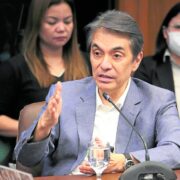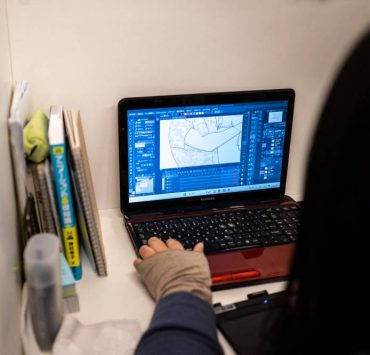Heat risk protection for workers
The Philippines, like many other countries, is experiencing high temperatures that could surpass the global average last year, the hottest year since global records began in mid-1800s. El Niño is making things worse with the heat index reaching up to 47 degrees Celsius this week in some parts of the country and forecasted to get even hotter next month. Face-to-face classes in public schools have been suspended and work-from-home option has been revived for employees to cope with the unbearable heat. But more than these stopgap measures, the government must consider long-term policies and craft a heat risk protection plan to help Filipinos manage extreme weather conditions.
These policies include returning to the old school calendar with classes beginning in June and building climate-resilient classrooms—points already tackled in a recent editorial. An equally urgent matter is to look into the welfare of those whose nature of work exposes them to heat stress, particularly in the construction and service sectors: those who build our roads and bridges, keep our streets and public spaces clean and orderly, and deliver our food and online purchases.
Comprehensive strategyLabor groups have appealed to employers and lawmakers to implement policies for these workers, majority of whom—95 percent per estimate of the National Union of Building and Construction Workers—are under short-term contracts and do not have security of tenure, social insurance, and other benefits. Labor unions have noted that some frontline and field workers have recently reported experiencing heat stress-related illnesses like high blood pressure, dehydration, heat cramps, and heat stroke. It’s a double whammy for daily wage workers in this extreme heat: if they don’t work, they don’t get paid; if they work, they risk their health.
The Nagkaisa labor coalition, which claims to be the country’s biggest alliance of labor groups and workers organizations, pointed to the need for a comprehensive strategy to mitigate the impact of extreme weather events on the labor sector. “Current laws and regulations fall short in addressing the challenges and stresses faced by workers due to extreme heat,” it said.
Flexible work arrangementsLast year, the Department of Labor and Employment (DOLE) issued Labor Advisory No. 8 outlining guidelines to reduce extreme heat exposure of employees including adjusting rest breaks or work locations for workers, allowing them to use temperature-appropriate uniforms and personal protective equipment, and providing them with free and adequate drinking water. DOLE also urged employers to adopt flexible work arrangements that allow work hours adjustments while maintaining the required total hours within the day or week until the weather conditions have improved. This could include moving work hours for construction companies, for example, to nighttime when temperatures are cooler.
Nagkaisa is also pushing for legislation that grants special emergency leave to workers. There are several pending bills that lawmakers need to act on: Senate Bill No. 652 and House Bill Nos. 663, 988, and 8847. These measures aim to supplement the provisions of Republic Act No. 10121, or the Philippine Disaster Risk Reduction and Management Act of 2010, by allowing those affected by calamities to avail of emergency leave as long as they have rendered at least six months of service to their present employer. The coalition also proposes paying hazard pay and incorporating “heat leave” in collective bargaining agreements that usually only list typhoons, floods, and earthquakes.
‘Last lung’ of ManilaPractical measures can also help avoid heat stress especially next month when fiestas are held in many parts of the country. Last Wednesday, some 40 dancers at a festival in Negros Oriental passed out during a street performance. Common sense dictates that local governments should adjust, even postpone, festivities if these would put public health at risk. They should also redirect their efforts to planting more trees instead of cutting them down for aesthetic or development purposes. The fact that Arroceros Forest Park, the so-called “last lung” of Manila, recently recorded a lower temperature of 36 degrees Celsius while the rest of the city sweltered at 41 degrees Celsius is an indication that government must fully commit to its tree planting program.Global warming is an evolving challenge that everyone must navigate. While the government works on reducing emissions to meet its global commitment, it must also consider the well-being of those on the frontlines on whose backs the economy grinds. As the International Labor Organization stated: “Working in safe and healthy environments is recognized as one of the ILO’s fundamental principles and rights at work. We must deliver on that commitment in relation to climate change, just as in every other aspect of work.”

















